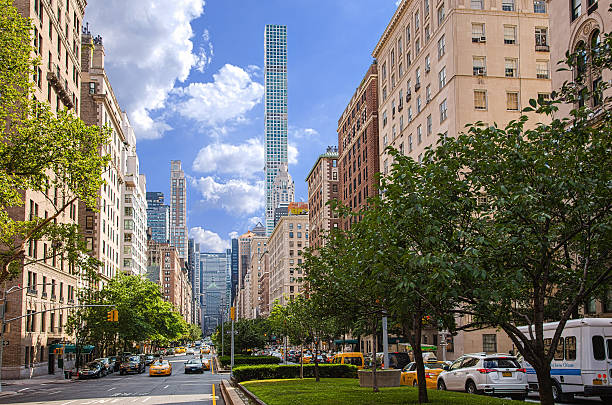Simplified: Luxury vs. Entry-Level: How NYC Real Estate Behaves at Different Price Points
 |
| Looking south on Park Avenue |
Let’s dive in.
How Often Do Homes Actually Close?
Across the country, more deals are falling apart before the keys ever change hands. Around 15% of home purchase contracts in the U.S. are getting canceled, often because buyers back out or financing falls through.
In NYC, the story is a little better—especially in Manhattan, where over 91% of deals are closing. But not all price points are equal. Luxury homes—those priced above $500,000—are more likely to face hiccups. Think financing complications, insurance surprises, or co-op board rejections. Entry-level buyers, especially those in the Bronx or Staten Island, often move faster and follow through.
List Price vs. Sale Price: Who’s Really Getting What They Ask For?
We all love to imagine homes selling for more than asking—but that’s not the norm in NYC right now. On average, homes across the city are selling for about 97–98% of the original list price. That means sellers are cutting prices just a little to make deals happen.
In the luxury market, especially in Manhattan, sellers often have to budge on price. In some cases, high-end properties sit for months and end up selling well below their original number. Meanwhile, lower-priced homes are holding their value better, especially in boroughs like Staten Island, where competition is stronger and bidding wars are more common.
Days on Market: How Long Are Homes Sitting Before They Sell?
This past year, NYC homes haven’t exactly been flying off the shelves—but the speed depends a lot on price.
Overall, homes in the city are taking about 2–3 months to go into contract. But some areas move faster than others. Staten Island has the shortest wait, while Brooklyn and the Bronx are seeing longer timelines, especially for more expensive properties.
Luxury homes—especially high-end condos or co-ops—can take 100 days or more to sell, as sellers test the market or wait for the right buyer. Entry-level homes are a different story. Many sub-$500K listings go quickly, especially if they’re in good condition and well-located.
What This Means for Buyers and Sellers
Whether you're looking to buy your first place in Queens or sell a multi-million-dollar loft in SoHo, understanding these trends can help you set expectations:
-
If you're a seller in the luxury market, be prepared to negotiate and wait longer for the right buyer. Pricing realistically is key.
-
If you're a buyer in the entry-level segment, move fast—especially if the home is priced well and in a competitive borough like Staten Island or Queens.
-
If you're entering the market in the $500K–$700K “middle zone,” expect a mix: some wiggle room on price, but still steady demand.
Final Thoughts
New York City's housing market has been steady this past year, but what’s happening under the surface really depends on your price point. Luxury homes are sitting longer and often selling below ask, while entry-level units are moving quicker and closer to list price.
In a city as diverse as NYC, the details matter. Whether you're buying, selling, or just watching from the sidelines, knowing how price point impacts the deal can help you make smarter decisions.